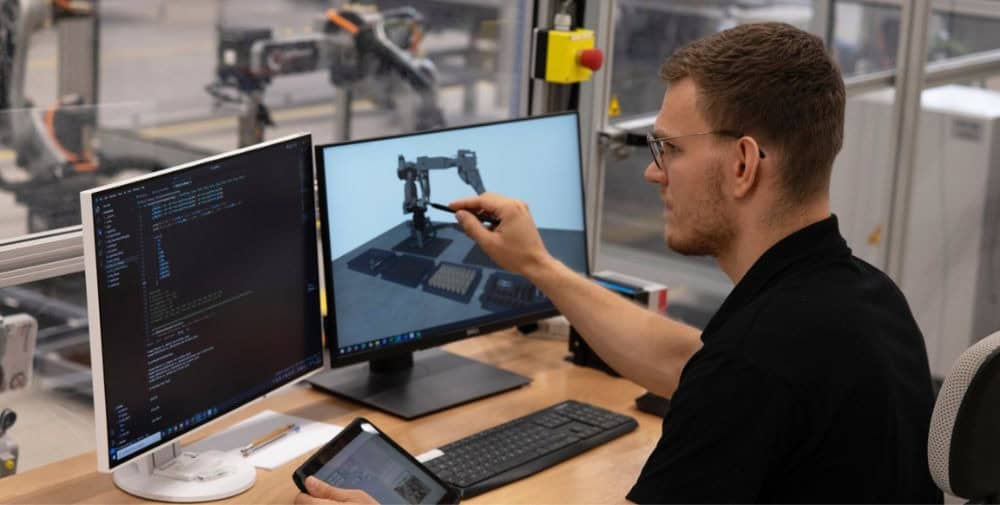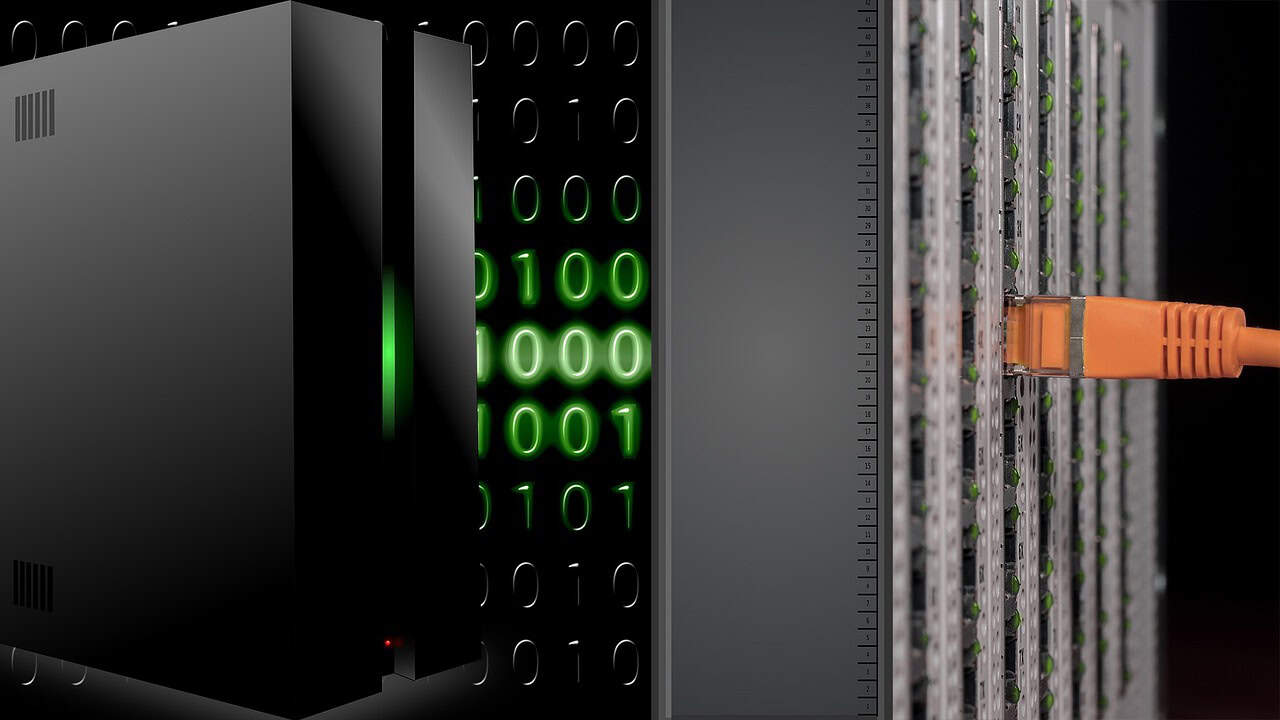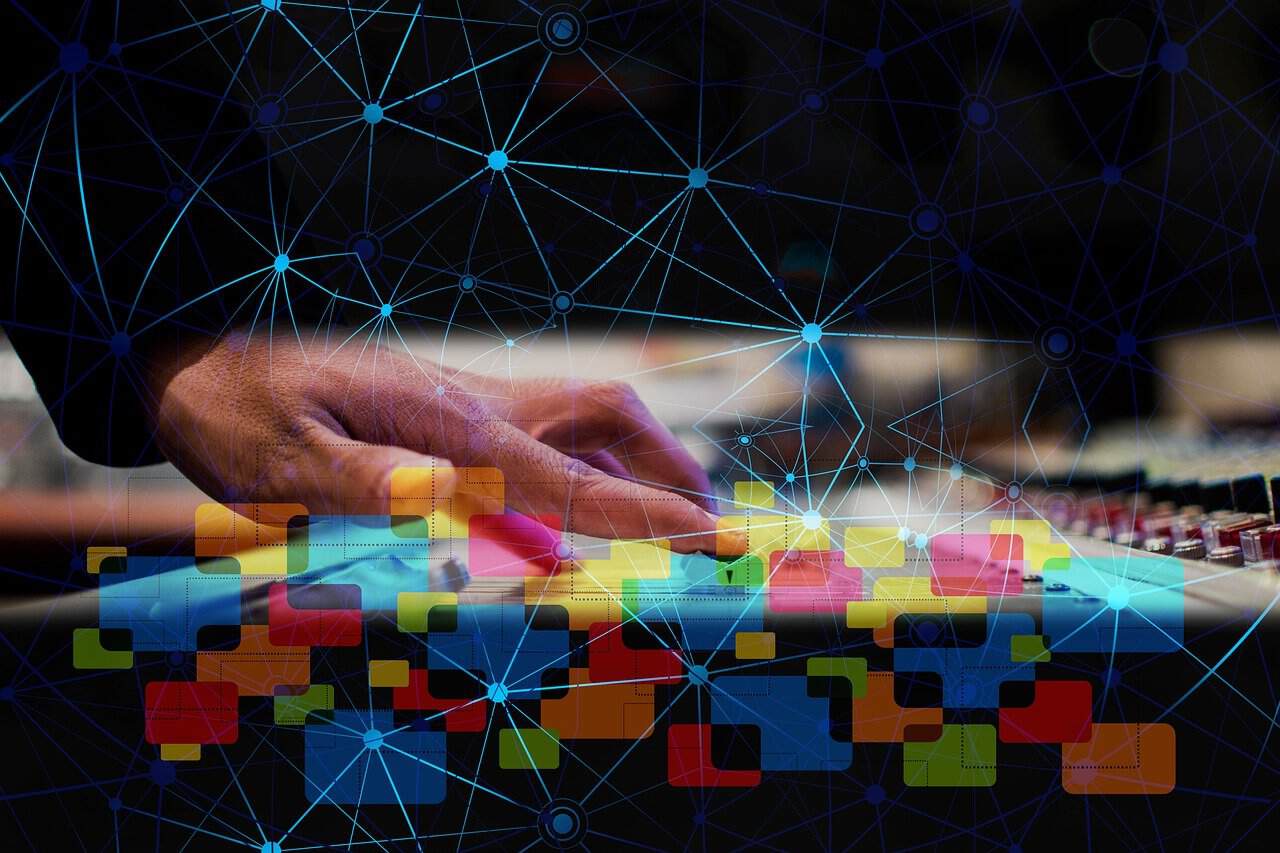
Experts know that commissioning a machine or system is time-consuming and requires experienced specialist personnel. As a rule, once the hardware has been fully assembled, commissioning often takes place first at the manufacturer’s premises and then on site at the customer’s premises. In most cases, faults in hardware or control technology only become apparent when the machine is fully operated for the first time for functional tests. The delays associated with troubleshooting may even lead to the loss of planned production capacity. In this case, a considerable investment of material, time and energy is not offset by any added value. And the troubleshooting has only just begun. It is therefore worth carrying out virtual commissioning first, in which the machine is virtually simulated and put into operation – and only using the knowledge gained from this to tackle the construction of the “real” machine.
VIBN and digital plant twin
For virtual commissioning, a digital image of the real machine, the digital plant twin, is created. This system twin includes all mechanical and electrical components and is closely based on the actual machine. Combined with the control software, it enables almost all functions and processes to be tested and optimized virtually. By simulating the real processes, developers can test the control programs, detect and rectify errors at an early stage and optimize the entire system.
The overall process is as follows: As a basis for virtual commissioning, the VIBN model is built using 3D and behavioral modeling of the mechanical and electrical components. This includes, for example, equipping sensors with a virtual detection field and creating workpieces or products as bodies or material flow elements in the simulation environment. In the next step, the VIBN model is connected to an emulation of the control system or the real control hardware, including the bus system. Once all the necessary signals from the control system have been linked to the VIBN model, virtual commissioning takes place. The pre-developed control programs are started and their execution is checked on the VIBN model. If errors occur, they can be rectified before the real commissioning – in the office or even from home. Necessary changes to the hardware configuration, such as missing sensors or adjustments to the mechanics, are also possible on the basis of the VIBN simulation. The virtually tested and optimized control program and other findings from the virtual commissioning can then be transferred to the real machine. This provides the best conditions for fast and reliable real commissioning. At best, even with improved machine functions.
Study results of “SaxoVI” and solution approaches for VIBN: Presentation on September 2, 2024 in Dresden
In recent months, the “Digital Plant Twin and Virtual Commissioning” working group at Fraunhofer IWU has conducted a study on the use of virtual commissioning by medium-sized machine and plant manufacturers in Saxony. To this end, it interviewed companies on the user and provider side of VIBN in detail. Over 90 percent of the companies surveyed are familiar with VIBN and almost as many rate the potential for improvement through VIBN as high. However, so far only a few are actually using the technology’s potential in operational practice. The authors of the study will explain how the advantages of VIBN can be better exploited on September 2 at the Versuchsfeld at Pforzheimer Straße 7a in Dresden. Participants will be able to exchange ideas with experts and potential and experienced users, discuss practical implementation examples and network extensively. The focus is on practical solutions for VIBN – so that Saxon machine and plant manufacturers can put their products into operation faster and with even higher quality.
The Fraunhofer IWU supports interested companies in the introduction and further development of virtual commissioning through training courses, proof-of-concept and within the framework of the industry working group “Virtual Commissioning” – IAVI.
– – – – – –
Further links
👉 www.iwu.fraunhofer.de
Photo: Fraunhofer IWU




